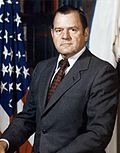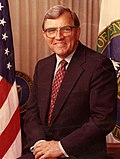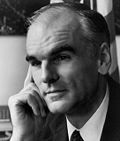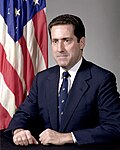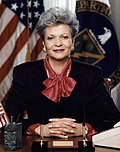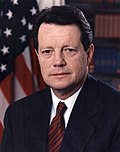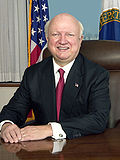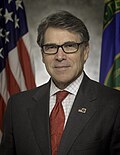| United States Secretary of Energy | |
|---|---|
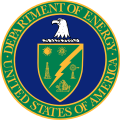 Seal of the Department of Energy | |
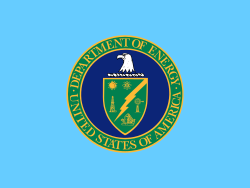 Flag of the secretary | |
| United States Department of Energy | |
| Style | Mr. Secretary (informal) The Honorable (formal) |
| Member of | Cabinet of the United States United States National Security Council |
| Reports to | President of the United States |
| Seat | James V. Forrestal Building, Washington, D.C. |
| Appointer | The president with Senate advice and consent |
| Term length | No fixed term |
| Constituting instrument | 42 U.S.C. § 7131 |
| Formation | August 6, 1977 |
| First holder | James R. Schlesinger |
| Succession | Fifteenth [1] |
| Deputy | Deputy Secretary |
| Salary | Executive Schedule, Level I |
| Website | Energy.gov |
The United States secretary of energy is the head of the United States Department of Energy, a member of the Cabinet of the United States and fifteenth in the presidential line of succession. The position was created on October 1, 1977, when President Jimmy Carter signed the Department of Energy Organization Act, [2] establishing the department. Originally, the secretary and the department focused on energy production and regulation. Over time, the emphasis shifted to developing technology for more efficient energy sources and energy education. After the Cold War, the department's attention also turned to radioactive waste disposal and environmental quality maintenance. [3] Former Secretary of Defense James Schlesinger was the first secretary of energy. As a Republican nominated by Democratic President Jimmy Carter, Schlesinger’s appointment remains the only instance of a president choosing a member of another political party for the position. Schlesinger is also the only secretary to be dismissed from the post. [4] Hazel O'Leary, Bill Clinton’s first secretary of energy, was the first female and first African American to hold the position. [5] The first Hispanic to serve as energy secretary was Clinton’s second energy secretary, Federico Peña. Spencer Abraham became the first Arab American to hold the position on January 20, 2001, under President George W. Bush. Steven Chu, appointed on January 20, 2009, under President Barack Obama, became the first Asian American to hold the position. Chu also served as the longest-serving secretary of energy and was the first individual to join the Cabinet after having received a Nobel Prize. [6] Former Michigan governor, Jennifer Granholm, confirmed on February 25, 2021 under President Joe Biden, was the second woman to lead the Department of Energy. [7] Chris Wright is the current secretary of energy under the Trump administration, confirmed on February, 4, 2025. [8]


